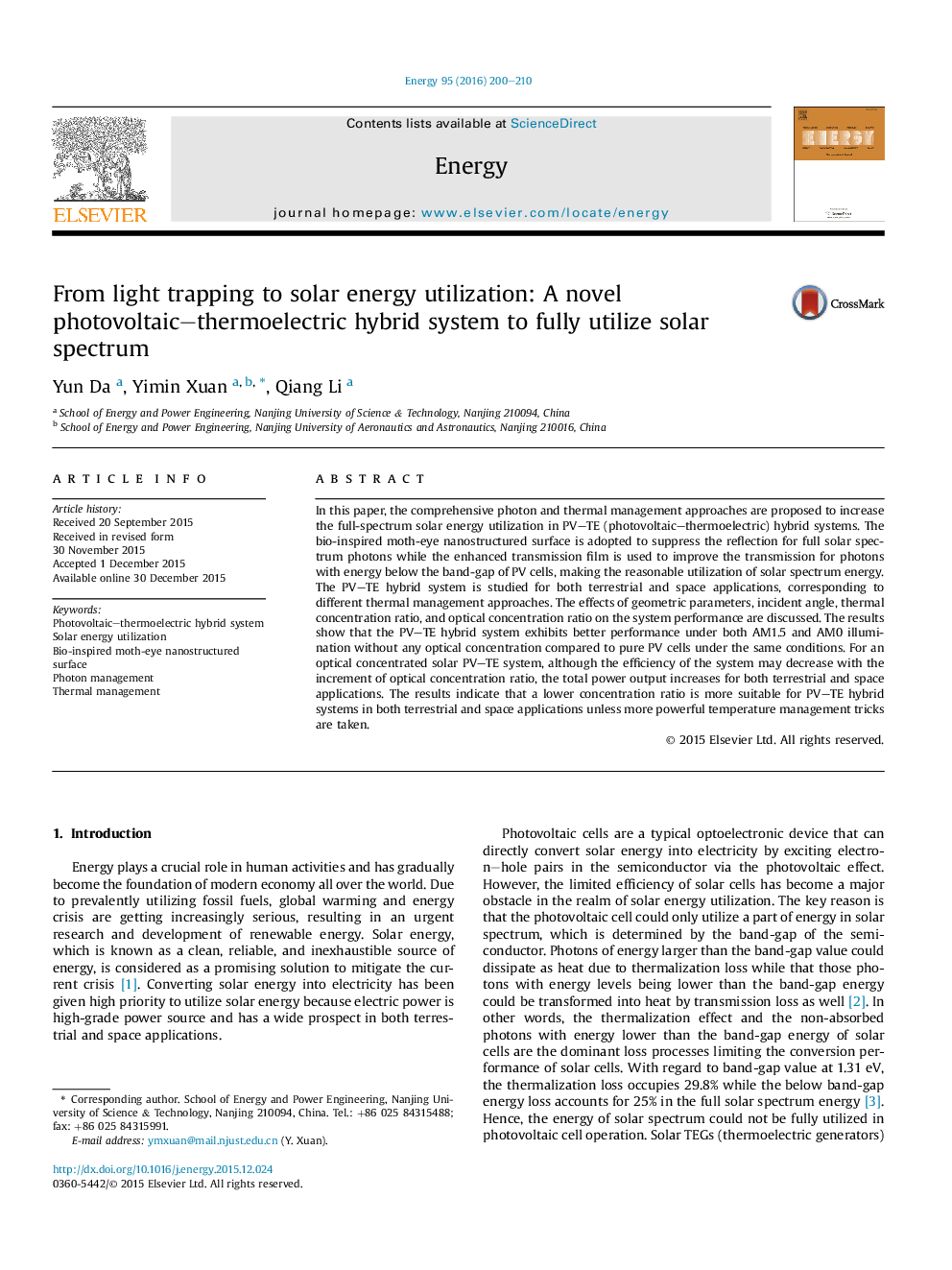| Article ID | Journal | Published Year | Pages | File Type |
|---|---|---|---|---|
| 1731426 | Energy | 2016 | 11 Pages |
•A design approach of efficient PV–TE systems for terrestrial and space applications is proposed.•Both solar photonic and thermal management issues are handled in designing a PV–TE system.•A bio-inspired structured surface and a transmission film are incorporated.•Effects of thermal and optical concentration ratios are discussed.
In this paper, the comprehensive photon and thermal management approaches are proposed to increase the full-spectrum solar energy utilization in PV–TE (photovoltaic–thermoelectric) hybrid systems. The bio-inspired moth-eye nanostructured surface is adopted to suppress the reflection for full solar spectrum photons while the enhanced transmission film is used to improve the transmission for photons with energy below the band-gap of PV cells, making the reasonable utilization of solar spectrum energy. The PV–TE hybrid system is studied for both terrestrial and space applications, corresponding to different thermal management approaches. The effects of geometric parameters, incident angle, thermal concentration ratio, and optical concentration ratio on the system performance are discussed. The results show that the PV–TE hybrid system exhibits better performance under both AM1.5 and AM0 illumination without any optical concentration compared to pure PV cells under the same conditions. For an optical concentrated solar PV–TE system, although the efficiency of the system may decrease with the increment of optical concentration ratio, the total power output increases for both terrestrial and space applications. The results indicate that a lower concentration ratio is more suitable for PV–TE hybrid systems in both terrestrial and space applications unless more powerful temperature management tricks are taken.
